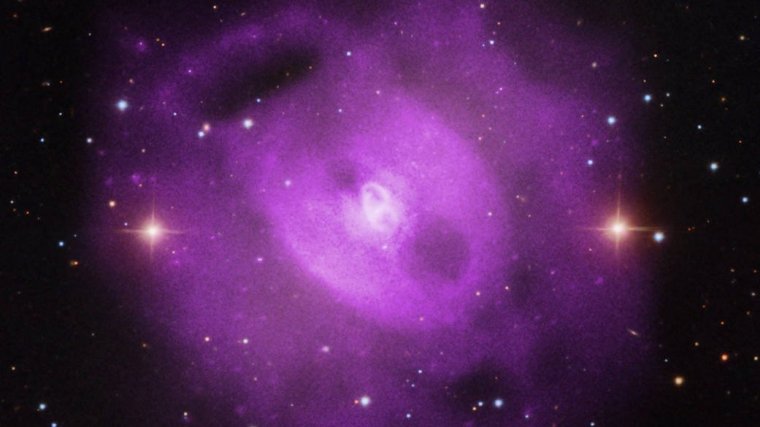| News / Space News |
Chandra Finds Evidence for Serial Black Hole Eruptions
NASA | JUNE 11, 2015
Astronomers have used NASA’s Chandra X-ray Observatory to show that, multiple eruptions from a supermassive black hole over 50 million years have rearranged the cosmic landscape at the center of a group of galaxies.
Scientists discovered this history of black hole eruptions by studying NGC 5813, a group of galaxies about 105 million light years from Earth.
The erupting supermassive black hole is located in the central galaxy of NGC 5813. The black hole’s spin, coupled with gas spiraling toward the black hole, can produce a rotating, tightly wound vertical tower of magnetic field that flings a large fraction of the inflowing gas away from the vicinity of the black hole in an energetic, high-speed jet.
The researchers were able to determine the length of the black hole’s eruptions by studying cavities, or giant bubbles, in the multi-million degree gas in NGC 5813. These cavities are carved out when jets from the supermassive black hole generate shock waves that push the gas outward and create huge holes.
The latest Chandra observations reveal a third pair of cavities in addition to two that were previously found in NGC 5813, representing three distinct eruptions from the central black hole. This is the highest number of pairs of cavities ever discovered in either a group or a cluster of galaxies.
YOU MAY ALSO LIKE



